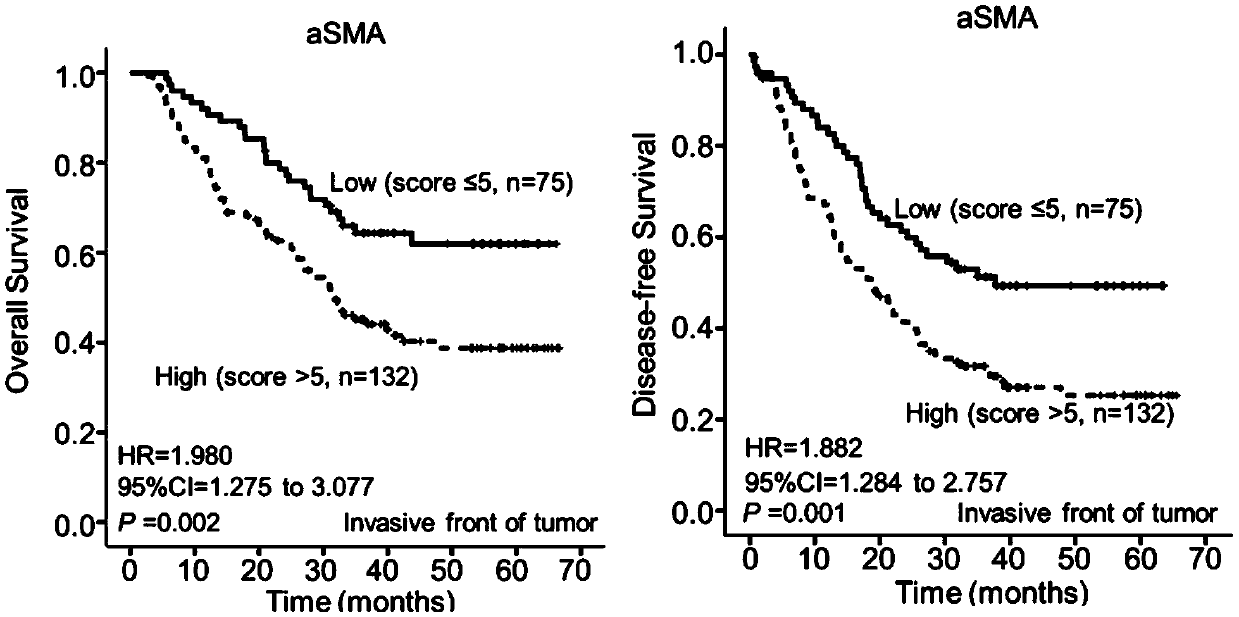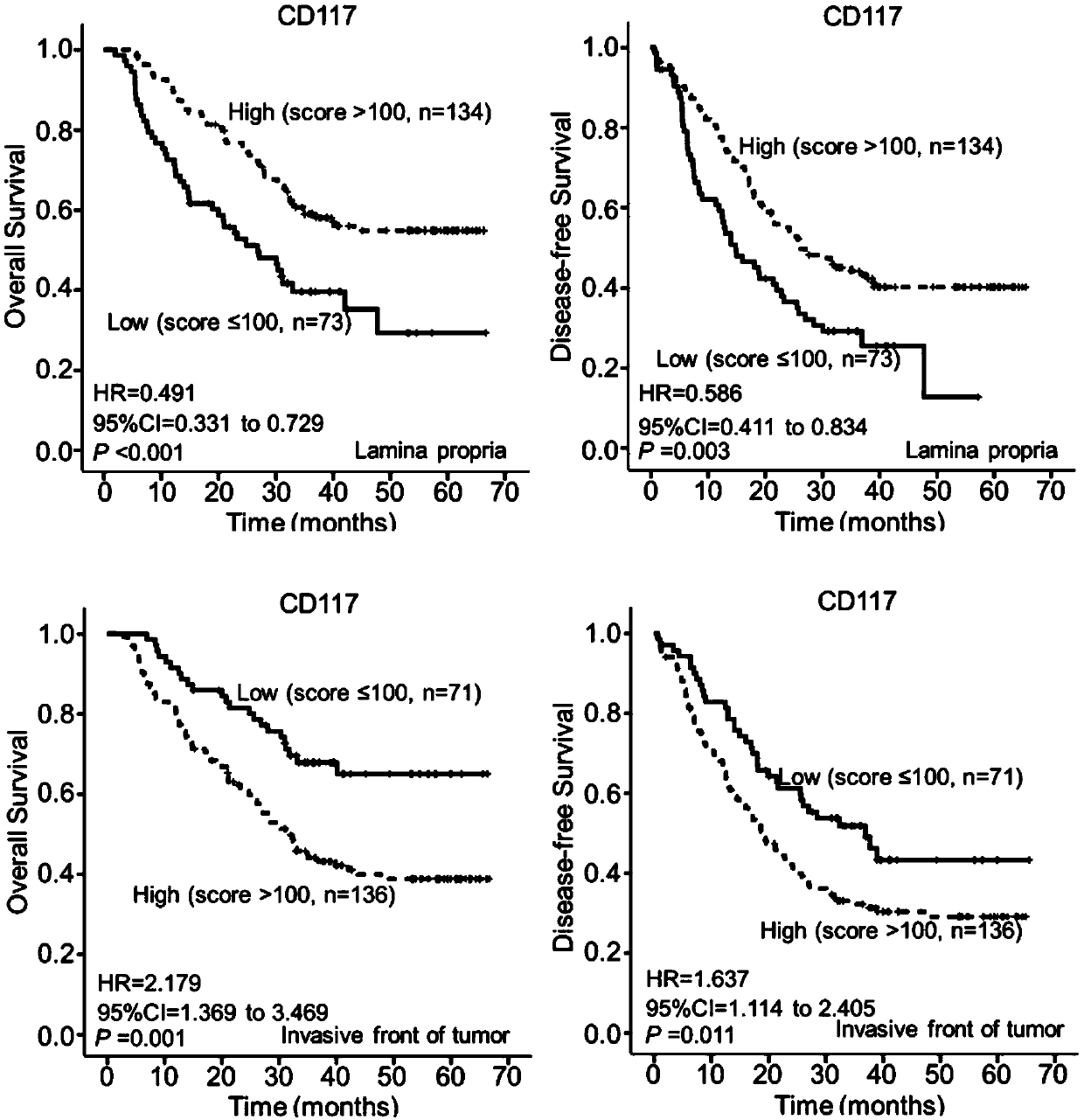Esophageal squamous cell carcinoma microenvironmental cell marker molecular model and application thereof
A technology for esophageal squamous cell carcinoma and mast cells, which is applied in analytical materials, measuring devices, instruments, etc., can solve problems such as poor applicability, lack of molecular markers, and tediousness, and achieves high prediction effect, sensitivity and specificity, and high The effect of predicting the effect
- Summary
- Abstract
- Description
- Claims
- Application Information
AI Technical Summary
Problems solved by technology
Method used
Image
Examples
Embodiment Construction
[0028] In order to make the purpose, technical solution and advantages of the present invention clearer, in this embodiment, 207 surgical specimen archiving wax blocks of esophageal squamous cell carcinoma patients from 2012 to 2014 were collected. The present invention will be described in further detail below in conjunction with the accompanying drawings.
[0029] The steps of immunohistochemical hypersensitivity two-step method are as follows:
[0030] After the specimens were serially sectioned, dewaxed with xylene, and hydrated with graded alcohol, the expression of the target protein was detected by an ultrasensitive two-step method. The specific method is as follows:
[0031] (1) The slices were repaired with 0.01M citrate repair solution, 3% H 2 o 2 After inactivating endogenous peroxidase and blocking with goat serum, incubate with a-SMA, CD163 and CD117 antibodies overnight at 4°C;
[0032] (2) After the slices were incubated with Polymer enhancer and Polymer pol...
PUM
 Login to View More
Login to View More Abstract
Description
Claims
Application Information
 Login to View More
Login to View More - R&D
- Intellectual Property
- Life Sciences
- Materials
- Tech Scout
- Unparalleled Data Quality
- Higher Quality Content
- 60% Fewer Hallucinations
Browse by: Latest US Patents, China's latest patents, Technical Efficacy Thesaurus, Application Domain, Technology Topic, Popular Technical Reports.
© 2025 PatSnap. All rights reserved.Legal|Privacy policy|Modern Slavery Act Transparency Statement|Sitemap|About US| Contact US: help@patsnap.com



